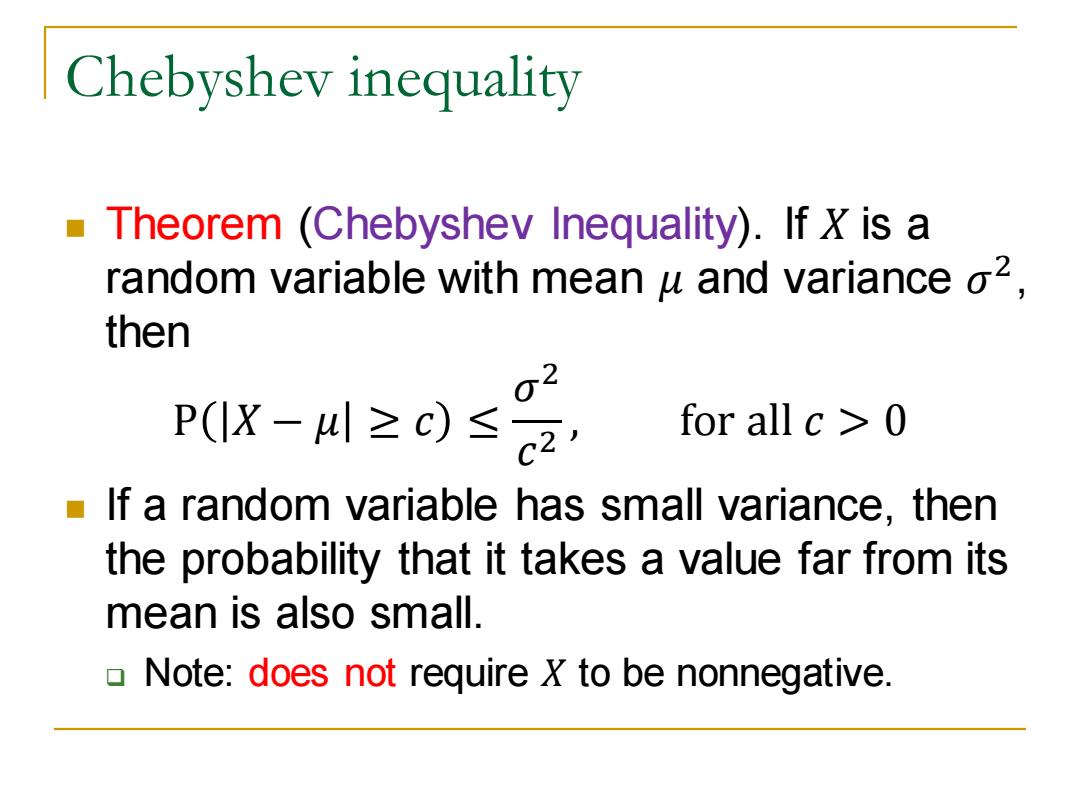
Chebyshev inequality Theorem (Chebyshev Inequality).If X is a random variable with mean u and varianceσ2, then P(X-|≥c)≤ c2 for all c 0 If a random variable has small variance,then the probability that it takes a value far from its mean is also small. Note:does not require X to be nonnegative
Chebyshev inequality ◼ Theorem (Chebyshev Inequality). If 𝑋 is a random variable with mean 𝜇 and variance 𝜎 2 , then P 𝑋 − 𝜇 ≥ 𝑐 ≤ 𝜎 2 𝑐 2 , for all 𝑐 > 0 ◼ If a random variable has small variance, then the probability that it takes a value far from its mean is also small. ❑ Note: does not require 𝑋 to be nonnegative
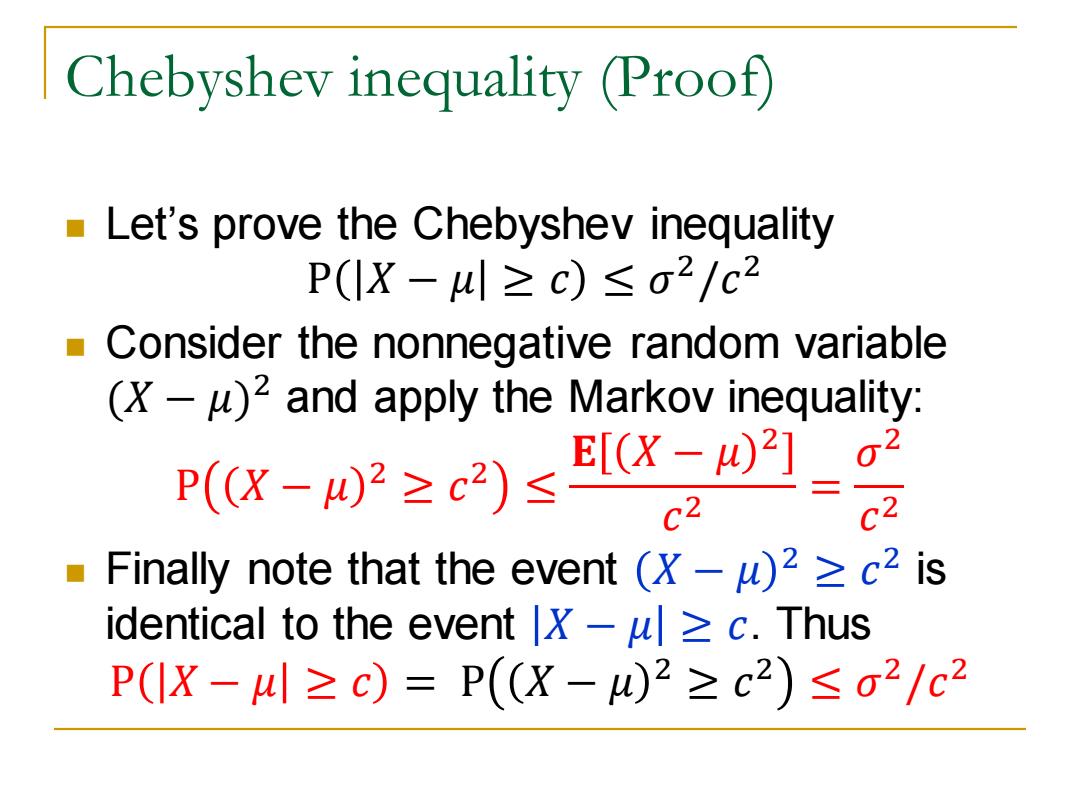
Chebyshev inequality (Proof) Let's prove the Chebyshev inequality P(IX-u≥C)≤σ2/c2 Consider the nonnegative random variable (X-u)and apply the Markov inequality: P(X-)2≥c2)≤ E[(X-W)2]σ2 c2 c2 Finally note that the event (X-u)2 =c2 is identical to the event X-uc.Thus P(IX-W≥c)=P(X-)2≥c2)≤σ2/c2
Chebyshev inequality (Proof) ◼ Let’s prove the Chebyshev inequality P 𝑋 − 𝜇 ≥ 𝑐 ≤ 𝜎 2 /𝑐 2 ◼ Consider the nonnegative random variable (𝑋 − 𝜇) 2 and apply the Markov inequality: P 𝑋 − 𝜇 2 ≥ 𝑐 2 ≤ 𝐄 𝑋 − 𝜇 2 𝑐 2 = 𝜎 2 𝑐 2 ◼ Finally note that the event 𝑋 − 𝜇 2 ≥ 𝑐 2 is identical to the event 𝑋 − 𝜇 ≥ 𝑐. Thus P 𝑋 − 𝜇 ≥ 𝑐 = P 𝑋 − 𝜇 2 ≥ 𝑐 2 ≤ 𝜎 2 /𝑐 2
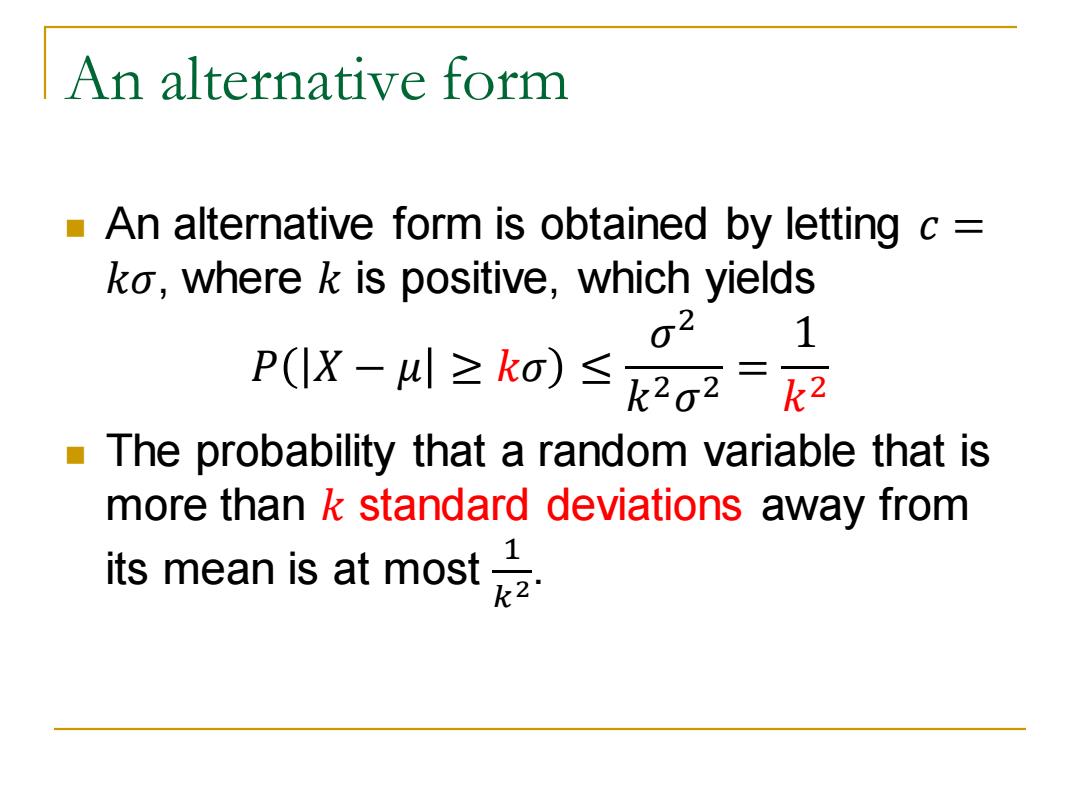
An alternative form An alternative form is obtained by letting C= ko,where k is positive,which yields 02 1 P(X-川≥ko)≤22=k2 The probability that a random variable that is more than k standard deviations away from its mean is at most之
An alternative form ◼ An alternative form is obtained by letting 𝑐 = 𝑘𝜎, where 𝑘 is positive, which yields 𝑃 𝑋 − 𝜇 ≥ 𝑘𝜎 ≤ 𝜎 2 𝑘 2𝜎 2 = 1 𝑘 2 ◼ The probability that a random variable that is more than 𝑘 standard deviations away from its mean is at most 1 𝑘 2
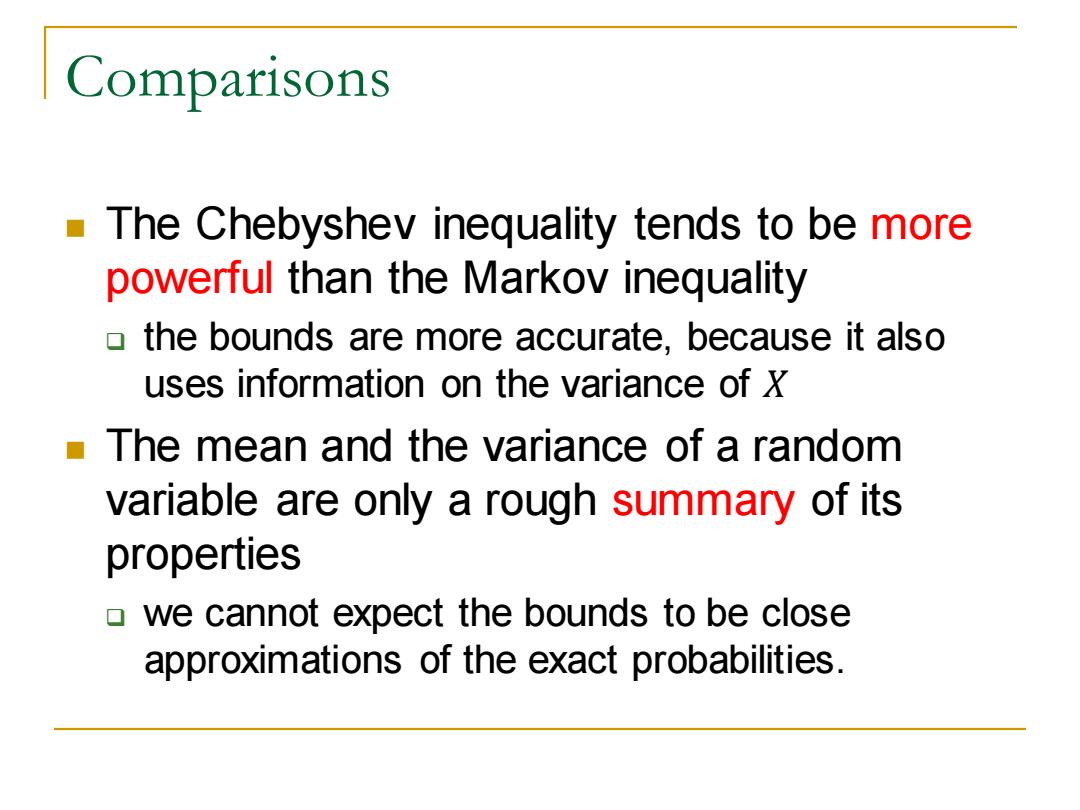
Comparisons The Chebyshev inequality tends to be more powerful than the Markov inequality o the bounds are more accurate,because it also uses information on the variance of X The mean and the variance of a random variable are only a rough summary of its properties we cannot expect the bounds to be close approximations of the exact probabilities
Comparisons ◼ The Chebyshev inequality tends to be more powerful than the Markov inequality ❑ the bounds are more accurate, because it also uses information on the variance of 𝑋 ◼ The mean and the variance of a random variable are only a rough summary of its properties ❑ we cannot expect the bounds to be close approximations of the exact probabilities
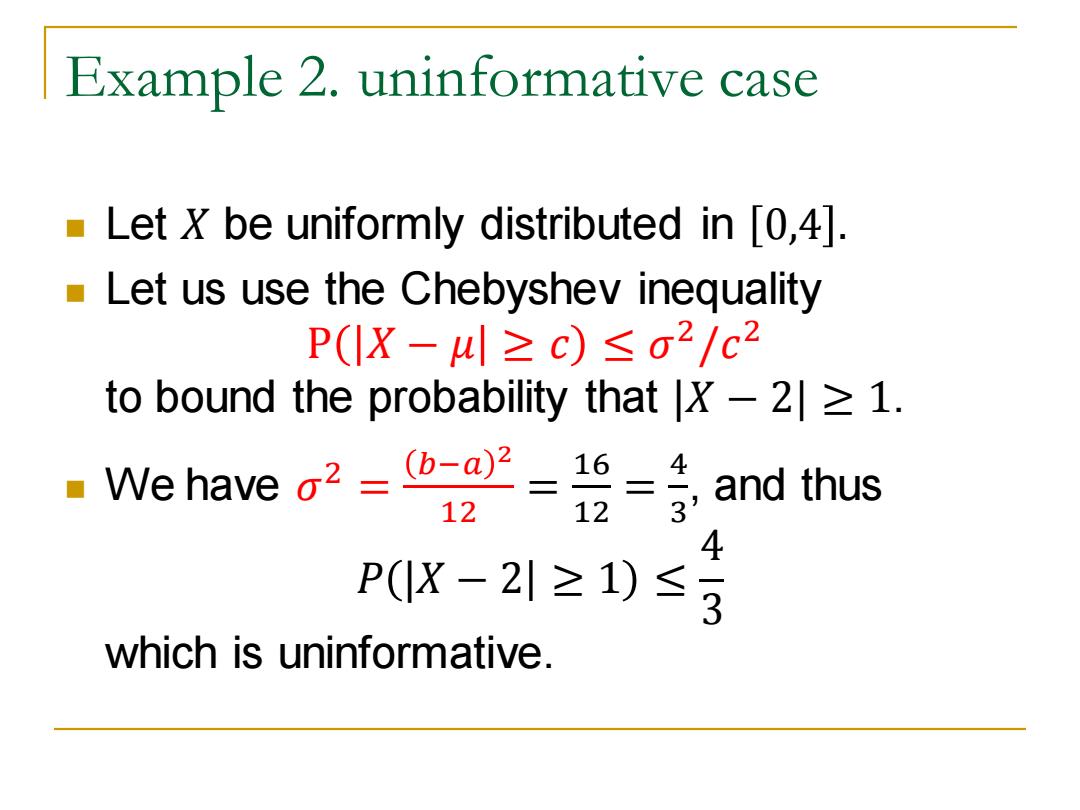
Example 2.uninformative case Let X be uniformly distributed in [0,4]. Let us use the Chebyshev inequality P(IX-4≥c)≤o2/c2 to bound the probability that X-2 1. ■Ne have o2=b-a2= 16 = and thus 12 12 3 4 P(X-2≥1)≤ 3 which is uninformative
Example 2. uninformative case ◼ Let 𝑋 be uniformly distributed in 0,4 . ◼ Let us use the Chebyshev inequality P 𝑋 − 𝜇 ≥ 𝑐 ≤ 𝜎 2 /𝑐 2 to bound the probability that |𝑋 − 2| ≥ 1. ◼ We have 𝜎 2 = 𝑏−𝑎 2 12 = 16 12 = 4 3 , and thus 𝑃 |𝑋 − 2 ≥ 1 ≤ 4 3 which is uninformative